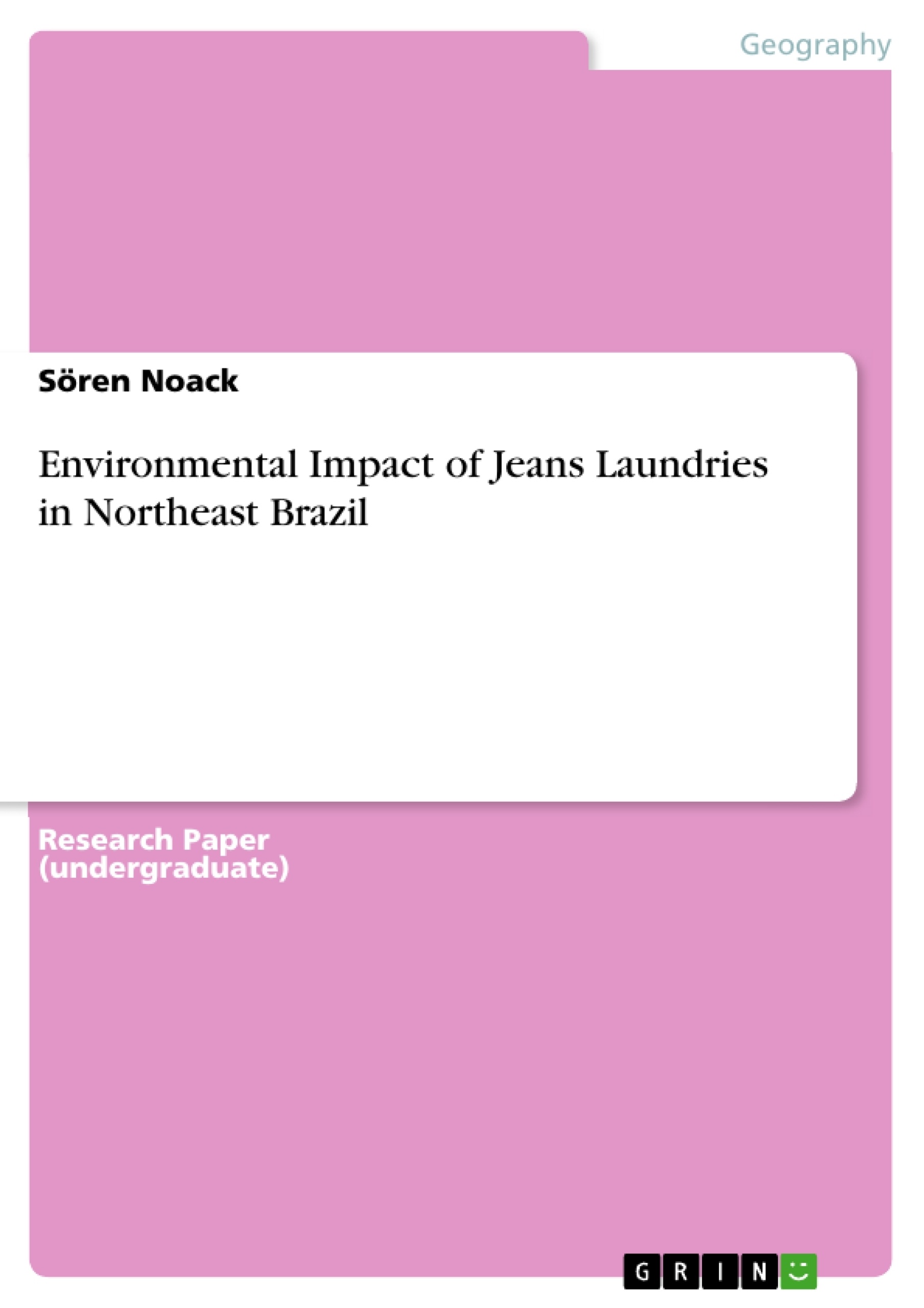Fast economic growth is often given higher importance than a more sustainable development. The textile cluster around Caruaru in Northeast Brazil serves as an example. For this rather poor region the textile industry is of high economic im-portance. However, jeans production goes along with severe environmental im-pacts. For years, a "devil's deal" between authorities and entrepreneurs (Tendler 2002) fortified the situation and inhibited any improvements of working conditions and environmental impacts. During the past years however, the situation has started to change. While aspects of high water consumption and pollution have already received attention (Almeida 2005), the field of energy efficiency in jeans laundries has been left aside. There exists a huge potential to reduce the consumption of firewood by several measures such as improved insulation, reclamation of heat energy and solar heating systems to reduce consumption of firewood, which is in most cases of illegal origin.
The aim of this paper is to present environmental impacts of the jeans industry in the case of jeans laundries in Northeast Brazil and to discuss possible solutions under the given socio-economic constraints of this region. First, some general background information is provided in order to point out the outstanding importance of the clothing industry for the local economy. Chapter 3 contains an analysis of the environmental problems caused by wastewater and residuals, as well as applied solutions. Chapter 4 adresses issues regarding energy efficiency in steam and hot water production. Finally, an outline for the future of jeans industry is provided.
Inhaltsverzeichnis (Table of Contents)
- Introduction
- Background
- Development in Brazil
- Development of Northeastern Brazil
- Importance of the textile industry for local economy
- Environmental issues
- Environmental Problems
- Water Pollution
- Applied treatment technology
- Characterization of the wastewater
- Remaining problems
- Solid Waste
- Steam Production and Energy Efficiency
- Fuel Choice for Steam Production
- Energy flows and losses in laundries
- Water Pollution
- Future of Jeans Laundering in Caruaru and Toritama
Zielsetzung und Themenschwerpunkte (Objectives and Key Themes)
This paper investigates the environmental impact of the jeans industry in Northeast Brazil, focusing on the region's laundries. It aims to highlight the connection between consumption patterns in developed nations and environmental issues in developing countries, specifically within Brazil. The paper explores the challenges faced by local laundries in managing wastewater, solid waste, and energy consumption.
- Environmental impact of jeans laundering in Northeast Brazil
- Water pollution and wastewater treatment
- Solid waste management in the industry
- Energy efficiency and steam production in laundries
- Connection between consumption in developed nations and environmental damage in developing countries
Zusammenfassung der Kapitel (Chapter Summaries)
The paper begins with an introduction outlining the pressing need to address environmental issues related to consumption patterns. Chapter 2 provides context by discussing the development of Brazil and its Northeast region, emphasizing the importance of the textile industry for the local economy. Chapter 3 delves into specific environmental problems, including water pollution from wastewater discharge, solid waste management, and energy efficiency challenges in steam production. It examines applied treatment technologies, wastewater characteristics, and remaining challenges in reducing pollution. Finally, the paper discusses the future of jeans laundering in Caruaru and Toritama.
Schlüsselwörter (Keywords)
The primary keywords and focus topics of the paper include: jeans industry, environmental impact, water pollution, wastewater treatment, solid waste, energy efficiency, steam production, consumption patterns, Northeast Brazil, textile industry, sustainable development.
- Quote paper
- M.Sc. Sören Noack (Author), 2008, Environmental Impact of Jeans Laundries in Northeast Brazil , Munich, GRIN Verlag, https://www.hausarbeiten.de/document/167981


